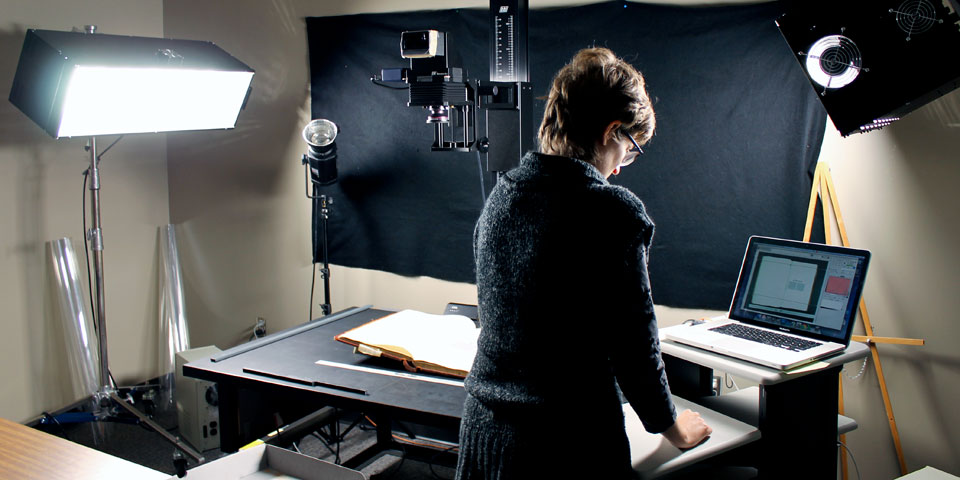Presidential Portrait Scanning
Portraits on the Move

The scanning of the Presidential Portrait Collection at the Dr. Jo Ann Rayfield Archives was a collaboration between the Archives and the Milner Digital Center from 2015 to 2016. Before they were moved to the Archives, the portraits resided in the Circus Room at the Bone Student Center. In an effort to preserve these important pieces of university history, Bone Student Center and Milner administrators decided to move most of the portraits into the care of the Archives.
Digital Decisions
Because of the costs involved in the preservation and restoration of the portraits, Archives asked the Digital Center in Milner Library to take on the task of taking high resolution, digital images of the portraits. With its state-of-the-art equipment, including a Better Light Scanning Back that can take high resolution images of large objects, the Digital Center was uniquely equipped to handle the precise and delicate work. Archives moved the portraits to the Digital Center in the summer of 2015 with the digitization work taking an entire year. After the portraits were imaged, they were returned to safe storage at Archives in the summer of 2016.
Scanning the Portraits
Early portraits feature hand crafted, plaster frames that have become extremely brittle and, in some cases, damaged. The Digital Assets Coordinator was tasked with not only imaging the portraits but moving these delicate pieces from their temporary storage to the digitization area. With care, the Digital Assets Coordinator placed the portraits on a large table where the Better Light scanner sits above the object. Lights on each side of the portrait help the scanner pick up details such as color variations, brush strokes, and canvas details. This kind of scanning can be extremely challenging, especially in cases where glass cannot be removed from a frame or varnish was applied over the artwork. In some cases, the library’s conservator was consulted when the stability of the portrait was in question. The Digital Assets Coordinator took several images of different sections of the portrait with different lighting adjustments. On average, a scanning session could take upwards of forty minutes.
Once the portraits were scanned, the multiple images were color corrected in the color matching software, ColorPony. They were then stacked on top of one another in Photoshop to create one image. While scanning a portrait could take forty minutes, color correcting dozens of scans and piecing them together into one image could take hours. When finished, the final digital file containing the portrait’s image averaged one gigabyte in size. This file is saved on Milner Library’s server where it can be both preserved and utilized for future research use.
Support Our Important Work
Without the support of the Redbird community, these important pieces of ISU history would be lost. Contributions made to the Milner Library Fund and the Rayfield/Dallinger Fund to Support University History help us preserve these and other important pieces of ISU’s memory. Help save your Redbird history by making a donation to these funds today!